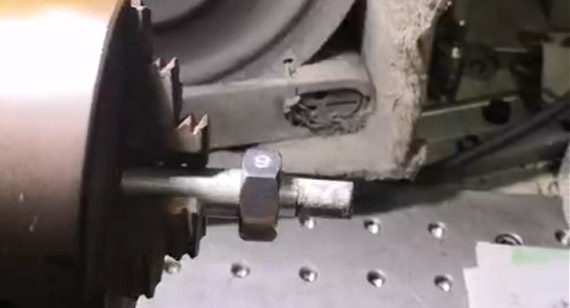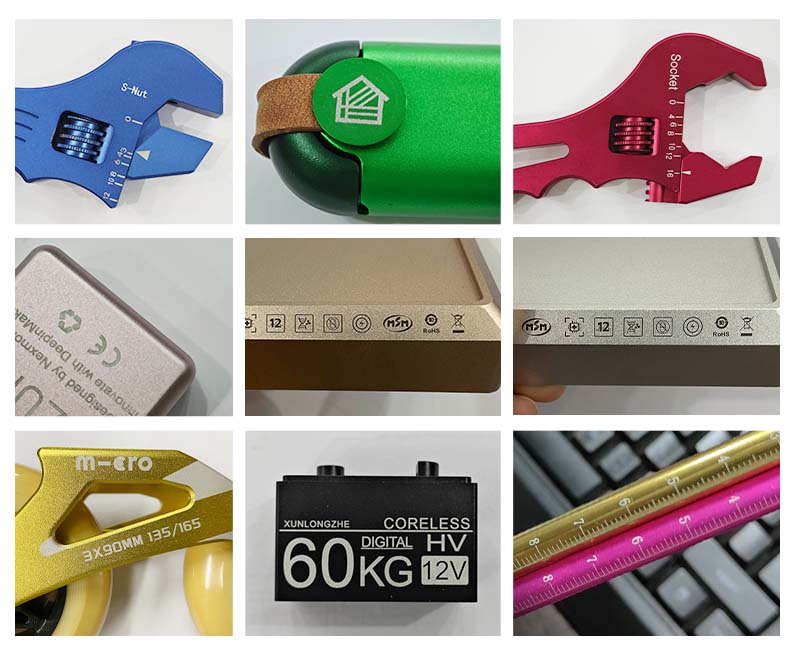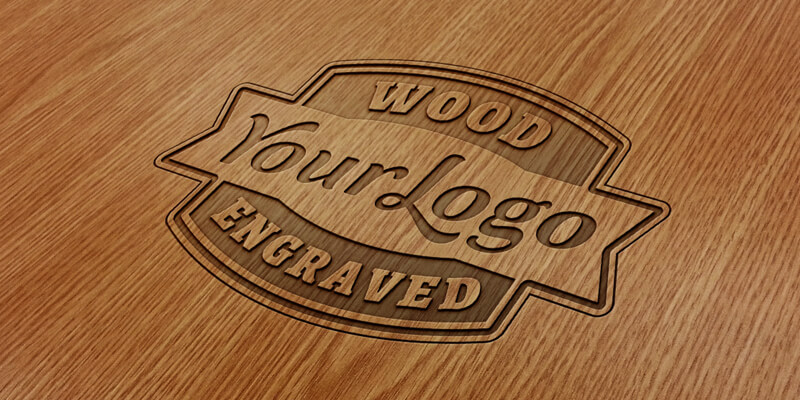15 years one-stop China custom CNC machining parts factory

Hey there I’m VMT Sam!
With 25 years of CNC machining experience we are committed to helping clients overcome 10000 complex part-processing challenges all to contribute to a better life through intelligent manufacturing. Contact us now
 172 |
Published by VMT at Jun 12 2024
172 |
Published by VMT at Jun 12 2024
Detailed Explanation of Laser Engraving Technology
1. Introduction
In the field of CNC machining parts manufacturing, laser engraving technology has gained widespread attention and application due to its high precision, high efficiency, and non-contact processing advantages. This article provides a comprehensive introduction to laser engraving technology, including its definition, historical development, working principles, application materials, advantages and disadvantages, and differences from other technologies, aiming to provide readers with a thorough and in-depth understanding.
2. What is Laser Engraving?
Laser engraving is a processing technique that uses laser beams to ablate or oxidize the surface of materials. It is based on the high energy, high density, and high consistency of laser beams. By controlling the energy and position of the laser beam, precise machining of the material surface can be achieved. Laser engraving technology can be applied to various materials, including plastics, metals, and wood, and is widely used in industrial manufacturing, art design, medical beauty, and other fields.

3. A Brief History of Laser Engraving
The development of laser engraving technology can be traced back to the 1960s when the invention of the laser made laser engraving possible. As laser technology continued to develop and improve, laser engraving technology gradually matured and was applied in various fields. In recent years, with the introduction of CNC technology and the continuous upgrading of laser equipment, laser engraving technology has further developed and been widely used.
4. How Does Laser Engraving Work?
The laser engraving process mainly includes the following steps: concept creation, design of marking image, material selection, and laser engraving.
Concept Creation: First, determine the pattern or text to be engraved and carry out the corresponding design.
Design Marking Image: Use graphic processing software to convert the designed pattern or text into a computer-recognizable file, such as a CAD file or vector graphic file.
Material Selection: Choose the appropriate material based on processing needs, such as plastic, metal, or wood.
Laser Engraving: Import the designed file into the laser engraving machine, adjust the laser parameters (e.g., power, speed), and start the laser engraving machine for processing.
During the processing, the laser head moves on the material surface according to the predetermined path and pattern, and the energy of the laser beam is absorbed by the material to produce chemical or physical reactions, thereby achieving the engraving effect.
5. Materials Used in Laser Engraving
Laser engraving technology is suitable for processing a variety of materials, including plastics, metals, and wood.
Plastics: Laser engraving can easily cut and engrave various plastic materials such as acrylic and PVC. These materials will melt or vaporize under the laser, achieving precise processing results.

Metals: Laser engraving technology can also be applied to metal materials. By controlling the power and speed of the laser beam, operations such as cutting, engraving, and marking on metal surfaces can be achieved. Common metal materials include stainless steel and aluminum alloys.

Wood: For natural materials like wood, laser engraving also performs excellently. The laser causes charring on the wood surface, creating unique engraving effects. Additionally, laser engraving can achieve hollowing and relief effects on wood surfaces.

6. Advantages and Disadvantages of Laser Engraving
Advantages:
High Precision: Laser engraving technology can achieve micron-level precision, suitable for manufacturing small components and precision parts.
High Efficiency: Laser engraving is fast, significantly improving production efficiency.
Non-Contact Processing: During laser engraving, there is no need to contact the material, avoiding issues related to mechanical stress or extrusion.
Wide Applicability: Laser engraving can process a variety of materials, including plastics, metals, and wood.
Strong Flexibility: By adjusting laser parameters and changing different laser heads, it can flexibly meet different material and processing requirements.

Disadvantages:
High Equipment Cost: Laser engraving equipment is usually expensive, which might be challenging for small enterprises or individuals.
Material Requirements: Not all materials are suitable for laser engraving; the appropriate laser parameters and processing methods must be chosen based on material properties.
Limited Processing Depth: Laser engraving usually achieves shallow processing effects, which may not be suitable for scenarios requiring deep processing.
7. Choosing VMT's Laser Engraving Services
VMT is a professional CNC machining parts services provider with advanced laser engraving equipment and rich processing experience. We are committed to providing high-quality laser engraving services, including custom laser-engraved logos, CNC prototype machining, and CNC machining services. By choosing VMT's laser engraving services, you will enjoy professional technical support and excellent customer service.

8. Five Types of Laser Engraving Machines
CO2 Laser Engraving Machines: Suitable for non-metallic materials such as wood, leather, and plastics. They have high power, fast engraving speed, and high precision.
Fiber Laser Engraving Machines: Suitable for processing metal materials, characterized by high precision and speed. They can also be integrated with automated production lines to improve efficiency.
Handheld Laser Engraving Machines: Ideal for small and portable processing needs, convenient to carry and operate.
Desktop Laser Engraving Machines: Suitable for small businesses and individual users, moderately priced and fully functional.
Industrial Laser Engraving Machines: Suitable for large enterprises and production line processing needs, offering high efficiency, stability, and reliability.
9. Differences Between Laser Marking, Laser Etching, and Laser Engraving
Laser Marking vs. Laser Engraving:
Laser marking uses laser beams to produce color changes or vaporize the surface of the material to create marks or text. It is mainly used for marking serial numbers, dates, barcodes, etc., with shallow depth affecting only the surface.
Laser engraving involves melting, vaporizing, or ablating the material using high-energy laser beams, creating a permanent engraving effect. It typically has a deeper depth, allowing for three-dimensional patterns or text.
Laser Etching vs. Laser Engraving:
Laser etching, also known as laser chemical etching or laser lithography, involves the chemical reaction between the laser beam and the surface coating or sensitive layer of the material, removing parts of the material to form patterns or text. This method is commonly used in the processing of microelectronics, semiconductors, and optical components.
Laser engraving directly processes the material itself, using the high energy of the laser beam to act directly on the material, causing melting, vaporizing, or ablation. This method is more direct and flexible, applicable to various materials such as metals, plastics, and wood.
10. Conclusion
As an advanced processing technology, laser engraving has been widely used in the field of CNC machining parts manufacturing due to its high precision, high efficiency, and non-contact processing advantages. By understanding the definition, historical development, working principles, application materials, advantages and disadvantages, and differences from other technologies of laser engraving, we can better understand and apply this technology. Choosing a professional laser engraving service provider like VMT ensures you receive high-quality laser engraving services.
11. Frequently Asked Questions
What is the difference between laser engraving and mechanical engraving?
Laser engraving is a non-contact process that avoids friction between the mechanical tool and the material surface, making it suitable for materials with special surface requirements. Laser engraving also offers higher precision and faster processing speeds. Mechanical engraving uses mechanical tools to cut or engrave the material, suitable for scenarios requiring deep processing.
Can laser engraving be used for food packaging?
Yes, laser engraving technology can be used for marking and decorating food packaging. Laser engraving can create clear and durable marks on food packaging materials without contaminating the food or affecting its safety. However, when choosing laser engraving parameters and materials, ensure compliance with food safety standards and relevant regulations.
How to choose the right laser engraving machine?
Choosing the right laser engraving machine involves considering several factors, including processing materials, processing needs, and budget. Different types of laser engraving machines are suitable for different materials and processing needs. When choosing, it is advisable to consult professional laser engraving machine suppliers or manufacturers for detailed information and recommendations. Additionally, refer to reviews and experiences from other users to help make an informed decision.
Ready To Start Your Next Project?
Get Instant Quote

Request a Free Quote
Send us a message if you have any questions or request a quote. We will get back to you ASAP!